Oyster Mushroom
Fairly common but localised. Can be found in large numbers at any time of year but more common in the Winter months.
| Mushroom Type | |
| Common Names | Oyster Mushroom (EN), Grey Oyster Mushroom, Wystrysen y Coed (CY), Boczniak Ostrygowaty (PL), Kései Laskagomba (HU) |
| Scientific Name | Pleurotus ostreatus |
| Season Start | All Year |
| Season End | All Year |
| Average Mushroom height (CM) | 0 |
| Average Cap width (CM) | 15 |
Cap
Convex and shell-shaped when young opening out flatter with wavy, sometimes split edges. Smoky grey/silver/brown.
Stem
White and opening out to the cap when present as sometimes the cap appears to comes straight from the tree.
Habitat
Deciduous trees, particularly beech. Grows in large shelf-like clusters on stumps and fallen wood.
Possible Confusion
The Pale Oyster (Pleurotus pulmonarius), pictured, is similar but paler and should be found in Summer unlike the Oyster Mushroom which prefers the colder months although either can grow at any time of year and it is thought they can hybridise making ID even harder.
Oysterlings look similar but never grow more than four centimetres across.
Angels Wings (Pleurocybella porrigens), which can be deadly if you suffer kidney disease. This is usually funnel shaped with a split so the funnel is incomplete. Rare and found mainly in Scotland.
Spore Print
Lilac. Cylindrical.
Taste / Smell
Excellent. Mushroomy.
Frequency
Common.
Other Facts
The Oyster Mushroom has some amazing properties one of which is that it is a carnivorous mushroom which traps and ingests nematode worms to provide it with nitrogen and other useful chemicals.
The species of genus Pleurotus contain statins which are thought to help reduce cholesterol.
Another is the fact that they have the ability to clean up pollution by hydrocarbons like petrol and oil which is quite incredible.



 (40 votes, average: 3.65 out of 5)
(40 votes, average: 3.65 out of 5)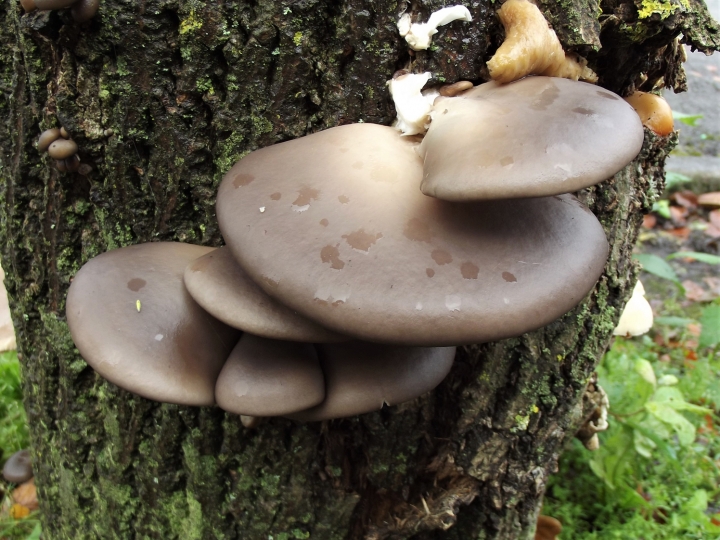















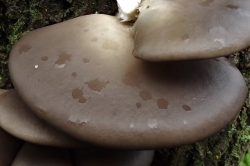
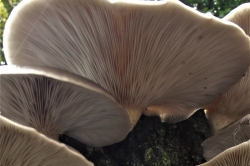
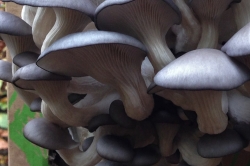
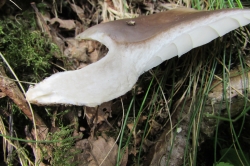
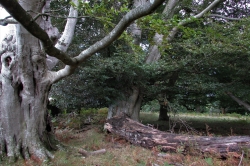
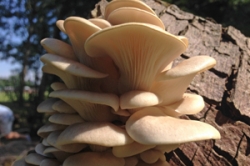






13 comments for Oyster Mushroom
An amazingly versatile mushroom! It would be great to get some photos or a link to the experiments about oil contamination clean-up that you mention in your super-informative video! Thanks for a great video!
My willow tree is half rotted and these have grown out of it. They smell amazing. Your video is fabulous and now i love them even more.
Greetings!
I am Dr. Tarek Fakhuri, I just wanted to let you know how comprehensive and well put together your piece is. As a fellow mushroom enthisiast, I find the methods and pitfalls you provide for identification of Oyster mushrooms to be very useful to the community and I am definitely sharing it on my blog and facebook. Here’s the link if you would like to check it out: https://mushroomhealthguide.com/
Either way, keep up the great work!
Thanks for your video,
I just used my mushrooms from our garden
thanks for your guide I have just picked one oyster mushroom an fried it,it was approx 8ins across there is a heap on the bank by me,all under a beech tree,I will have to dry them to use later,no one could chomp through that many mushrooms !
Following you on youtube. About to incorporate natural mushroom production in to the small holding ttat we are currently developing. So far we have found Ceps & Chanterelles amongst other species but now we are about to introduce Oysters given that we have had to remove quite a bit of willow and birch to create our orchard. We have a myriad of saplings going in on our boundaries to increase shelter and biodiversity.
The once tapped spring/ well had the land flooded only now it is been again tapped giving us a pond which will naturalise with a reed bed wetland area for our birds( Geese and ducks) and wildlife.
The pond will provide the irrigation and fertiliser for our growing operation with the fungal element aiding us in producing top quality compost/ soil for growing aswell as a small income stream.
Bottom line is that you have aided in adding another line of diversity to our enterprise for which I am massively grateful.
Excellent – Thanks. Found mine growing out of a dead part of a live Beech.
Today i found what i think are Olive Oysterlings (Sarcomyxa serotina ) but one was at least 15cm across, has anybody else found large ones?
I would be interested to get further info on this. I am starting to doubt myself between grey oysters and olive oysterlings. Are there any other considerations one should be aware of to correctly ID grey oysters from olive oysterlings?
Hi Stefan,
Size is a key indicator. If you make sure that one of your group of what you think are oysters are 15cm or more (hand sized) then you will be avoiding any lookalikes. Olive oysterlings are also ….. olive! Oysters are grey. Hope that clears things up.
I find the business sk simple that anyone can do.
I like the health benefits as well, this type of mushroom is versatile, and it requires little financial investments
Am a new grower, so I will keep on learning
what is the best way to cook an oyster mushroom
My favourite way to cook most mushroom is simply fried in butter and seasoned.